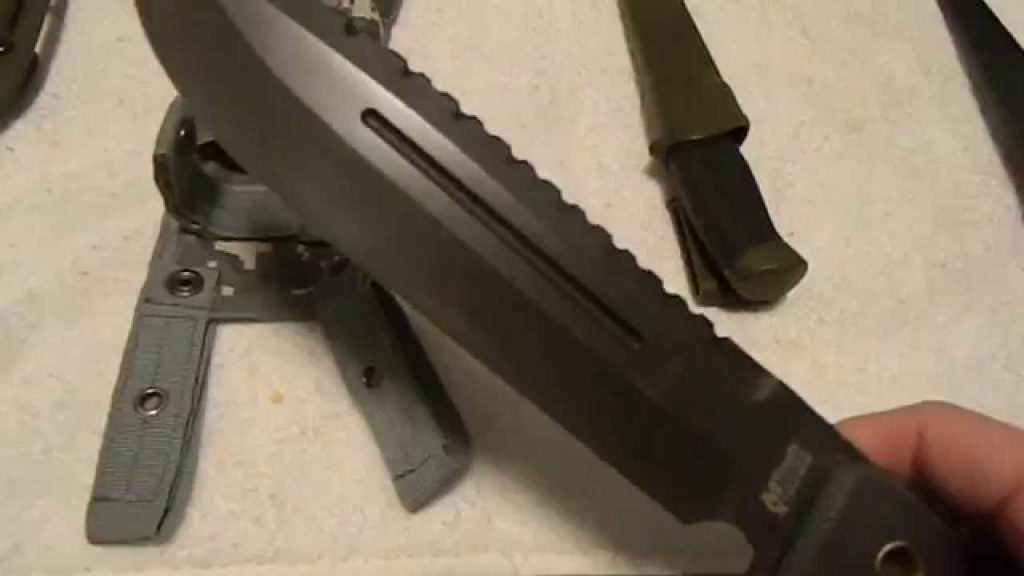How to Choose The Right Survival Knife
When it comes to choosing the right survival knife for you, nothing beats getting the chance to see it in person. Purchasing online is certainly easier but you can’t truly get a feel for the knife as much as going into a store. In this guide, we are going to try and help you choose the right survival knife for you.
Aren’t They All The Same
Contents
Not all knives are created equal and depending on the intended use of the knife will depend on which you settle on.
The larger fixed blade knives such as machetes are made more for heavy-duty tasks such as creating a shelter and cutting up branches for firewood. Smaller knives are much more convenient for smaller delicate work but can also be lashed to long sticks to make a spear.
Fixed Vs Foldable
Fixed blades are the preferred choice for more rugged use due to their strength however, their size and weight can sometimes be an issue. Sheath folding knives are preferred if space and compactness are priorities, but they are inherently weaker at the pivot point.
Does Size Matter?
The size of the knife you should choose depends on how you plan on carrying it, and what activity are you preparing for. Are you driving into a remote location where you could be stranded? A larger fixed blade knife and sheath folders can be brought since weight and space are not priorities. Are you going on a solo trip? Choose a smaller fixed blade or a sheath folder. Larger knives would be best suited for large trees or dense forest, while sheath folders are good for the desert where there is less need to cut large objects.
Handle Material
A heavier knife should have a heavier handle—especially for chopping—so wood, bone, or a plastic/rubber combination is ideal. A medium knife can use any combination.
One of the most popular materials used for handles is called micarta, a type of composite material made from linen and synthetic resin. The result is an incredibly strong material. Micarta will offer you enough grip even when it is wet out. It can withstand changes in temperature and differences in humidity. In addition, Micarta is maintenance-free, abrasion-resistant, and very comfortable in hand. A sublime material for almost any knife.
Wood and bone handles can be very comfortable but if they not cared for properly, they can dry out and crack. Metal is strong and long-lasting, but can be heavy and gets hot or cold depending on the conditions. Rubber can be comfortable if designed properly and absorbs vibration, but can deteriorate or get damaged more easily.
Blade Material
The most common blade material for larger knives is carbon steel as they are very good at holding an edge. These must be looked after well as they are prone to rust and corrosion.
The most common blade material for smaller blades is stainless steel due to it being easily available and inexpensive.
One thing to remember is that the less carbon content in the blade, the quicker the edge will go dull. It is however easier to resharpen than those with more carbon content.
Lock Knives
In the UK, lock knives are not classed as folding knives and are illegal to carry around in public. Knives that fall into this category have blades that can be locked/folded by pressing a button. These can include multi-tool knives.
Banned Knives and Weapons
It is illegal to bring into the UK, sell, hire, lend or give anyone the following:
- Butterfly Knives (Balisongs) – these have blades hidden inside the handles that split in the middle.
- Disguised Knives – these are knives that are hidden inside everyday objects such as belt buckles and phones.
- Flick Knives – these shoot a blade out from the handle when a button is pressed.
- Gravity Knives
- Stealth Knives – a knife or spike not made from metal (except when used at home, for food, or a toy)
- Zombie Knives – these have a cutting edge, serrated edge, and images or words that suggest it to be used for violence.
- Swords, including samurai swords – a curved blade over 50cm (with some exceptions, such as antiques and swords made to traditional methods before 1954).
- Sword Sticks – blade is hidden inside a walking stick.
- Push Daggers
- Blowpipes
- Telescopic Truncheons – extend by pressing a button or spring in the handle.
- Batons – straight, side-handled or friction-lock truncheons.
- Hollow Kubotans – cylinder-shaped keychains holding spikes.
- Shurikens (throwing stars)
- Kusari-Gama – sickle attached to a rope, cord, or wire.
- Kyoketsu-Shoge – hook-knife attached to a rope, cord or wire.
- Kusari – a weight attached to a rope, cord or wire.
- Hand/Foot Claws
- Knuckledusters
If you are unsure as to whether a knife or weapon is legal, you should contact your local police first.
What Are Good Reasons For Carrying a Knife?
Examples of good reasons to carry a knife or weapon in public can include:
- Taking knives you use at work too and from work.
- Taking it to a gallery or museum to be exhibited.
- If it’ll be used for theatre, film, television, historical reenactment, or religious purposes, for example, the kirpan some Sikhs carry.
- If it’ll be used in a demonstration or to teach someone how to use it.
If put before the courts it will ultimately be their decision as to whether you have a good enough reason for carrying it.

